|
|
Home →
Survival →
Shelter →
Brush
Bush Shelters
by
Allan
"Bow" Beauchamp
Brush
shelter constructions and photos by
Allan "Bow" Beauchamp |
|
| |
| Brush Shelters in the winter |
| |
|
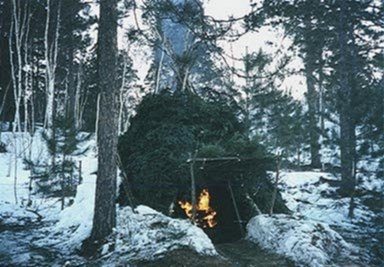
|
With the use of live vegetation, quite a large shelter
can be made.
Here is a brush shelter in the winter, with a warming
fire built just inside the entrance.
If you use a warming fire with any brush shelter please
be very careful to not set your shelter on fire!! | |
| |
|
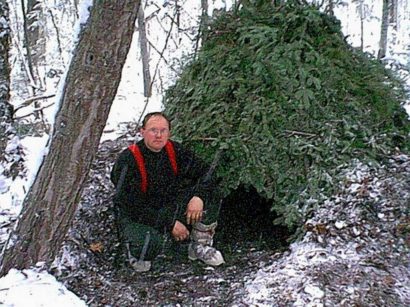
|
A small teepee brush shelter. On this
particular day it was pouring rain. But Allan reports that it worked very well.
Spruce shed rain very efficiently if the branches are pointed
downward.
| |
| |
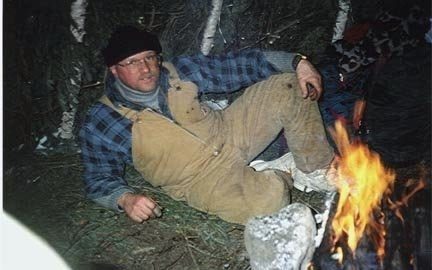 |
An inside view of the same shelter.
With care, a small fire can be lit inside,
for extra warmth -- you definitely don't want to be caught inside
one of these if it goes up in flames!! | |
| |
|
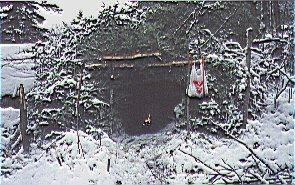
|
Another shelter in the winter. Note the frame holding the
brush up, creating a door frame. | |
| |
|
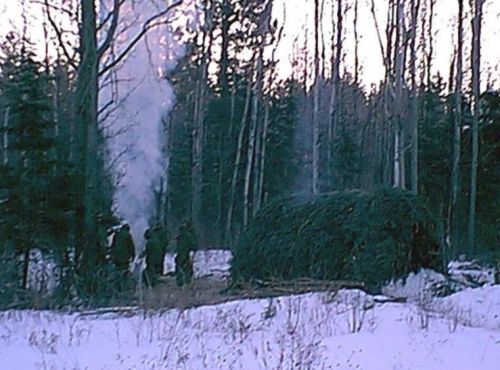 |
A much larger brush shelter. | |
|
|
|
|
|
|
"Teepee"-style brush shelters |
|
|
|
In spite of appearances, brush shelters can be amazing
durable. This shelter is four years old.
|
|
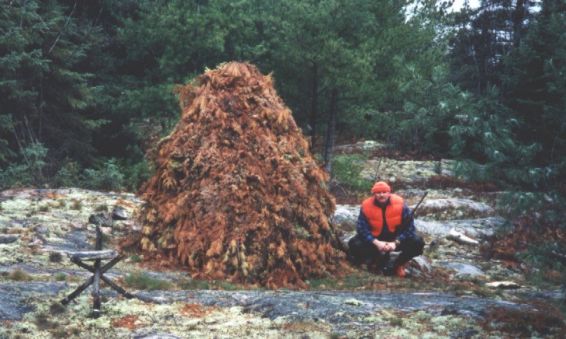
|
| |
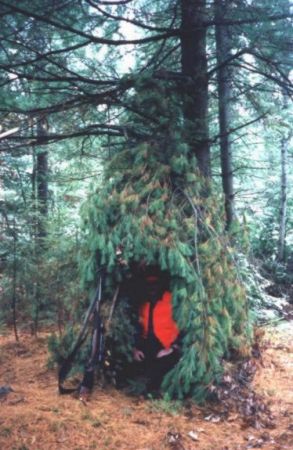 |
Another one. This is good for camouflage,
in this case for hunting.
| |
| |
|
|
| |
|
| |
| Brush shelters can have less of a distinct form. They
don't need to be in a teepee shape. |
| |
|
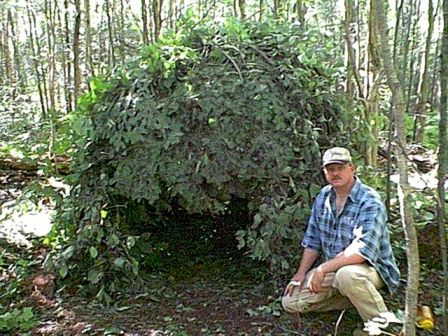
|
This shelter was still very
good and serviceable two years after it was first built.
| |
| |
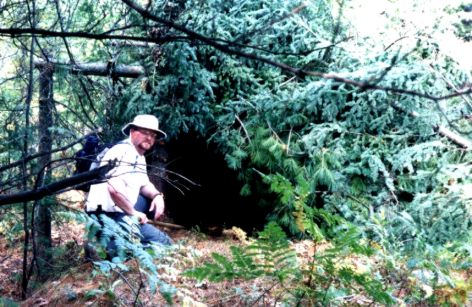 |
A good shelter can be made using a fallen tree as a
framework.
Obviously there are many factors which determine what
form this type of shelter would take, such as tree branches, height
from the ground, type of tree, type of ground surface, location,
etc.
Also, you want to be sure that the tree will not give way
and collapse on you!
| |
| |
|
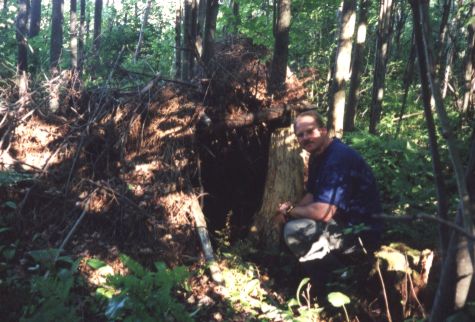
|
A great stump shelter. Bow says this was a cozy and easy shelter,
made partially from a tree stump. | |
| |
|
| Children love making brush shelters. |
| |
|
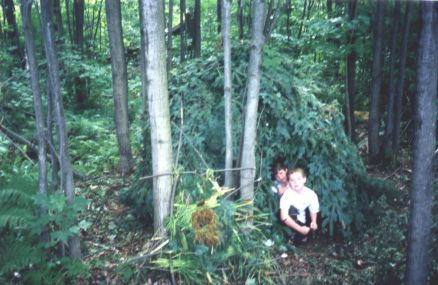
|
A bush shelter is a great way to introduce children to
the skills of wilderness shelter-building. It can be a lot of fun
for them, especially if the shelter is roomy enough to play in.
So...a compromise is made. Normally, shelters are made
just big enough for their purpose, which is usually to keep you warm
at night. But, a kid's shelter needs to be a lot bigger so they can
play in it. If they can't play, it won't be fun for them, and they
won't enjoy the experience, and won't be as likely to do it again! | |
|
|
|
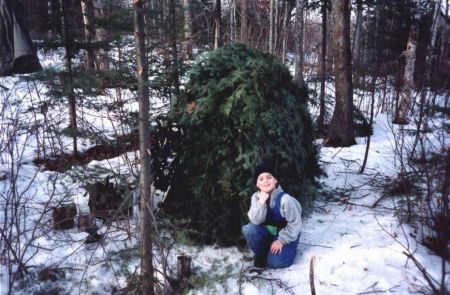
|
"Here is my son Nicholas, and
he's happy once our shelter is done -- he knows the coco is
on its way!"
--Bow
|
|
|
|
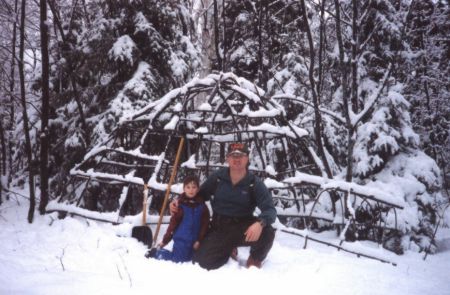 |
"Here is my little girl, Jessica, learning
skills for winter shelters."--Bow
|
|
|
|
|
|
|
|
A semi-lean-to type of bush shelter
If you notice the kids inside, they are sitting by a fire stone
pit. Bow says that this shelter turned out really good: a big shelter with
an "over head rain
collector" added. When it rained the bark sent the water to a waiting
basket. So, as a standalone brush shelter it seems to have it all!
|
|
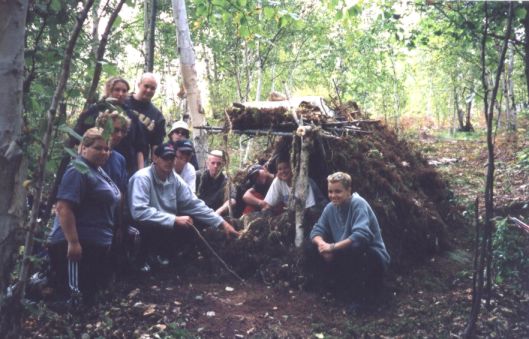
|
| |
|
|
|
|
|